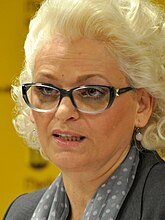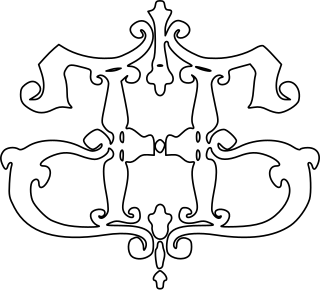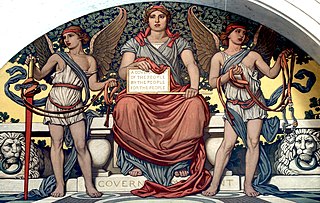
A ministry of finance is a ministry or other government agency in charge of government finance, fiscal policy, and financial regulation. It is headed by a finance minister, an executive or cabinet position.

Mlađan Dinkić is a Serbian economist, musician and former politician.

The Socialist Republic of Macedonia, or SR Macedonia, commonly referred to as Socialist Macedonia, Yugoslav Macedonia or simply Macedonia, was one of the six constituent republics of the post-World War II Socialist Federal Republic of Yugoslavia, and a nation state of the Macedonians. After the transition of the political system to parliamentary democracy in 1990, the Republic changed its official name to Republic of Macedonia in 1991, and with the beginning of the breakup of Yugoslavia, it declared itself an independent country and held a referendum on 8 September 1991 on which a sovereign and independent state of Macedonia, with a right to enter into any alliance with sovereign states of Yugoslavia was approved.

Radovan Jelašić is a Hungarian-Serbian economist who served as the Governor of the National Bank of Serbia from 2004 to 2010. He has been the CEO of Erste Bank Hungary since June 2011 and is also the chairman of the Hungarian Banking Association.
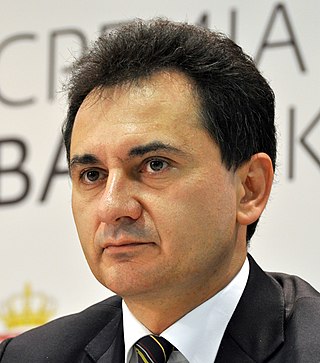
Božidar Đelić is a Serbian economist and former politician. A longtime member of the Democratic Party, he was highly positioned in politics of Serbia after the overthrow of Slobodan Milošević. He served as the Minister of Finance and Economy in the Government of Serbia from 2001 to 2004 and later as Deputy Prime Minister of Serbia and Minister of Science and Technological Development from 2007 to 2011.
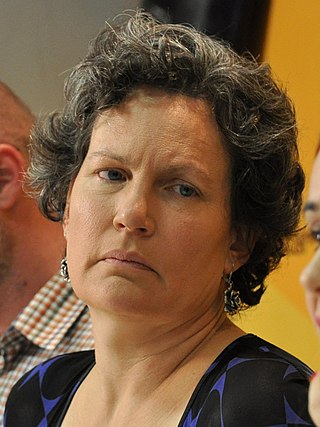
Kori Udovički is a Serbian former politician. An independent politician, she previously served as deputy prime minister of Serbia and minister of public administration and local self-government from 2014 to 2016, governor of the National Bank of Serbia from 2003 to 2004, and minister of mining and energy from 2002 to 2003.

Andrija Radović was a Montenegrin and Yugoslav politician and statesmen, former Prime Minister and leader of the People's and then Democratic Party, fighter for parliamentary democracy and chief proponent of Montenegro's unification with Serbia.
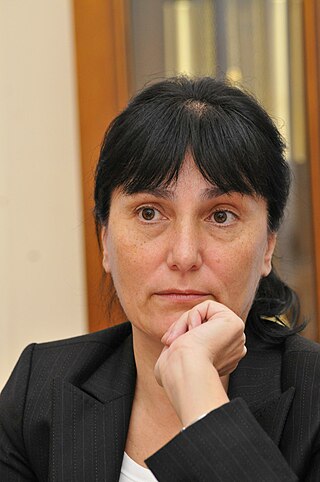
Diana Dragutinović is a Serbian economist, who was Minister of Finance in the Government of Serbia from 2008–11.
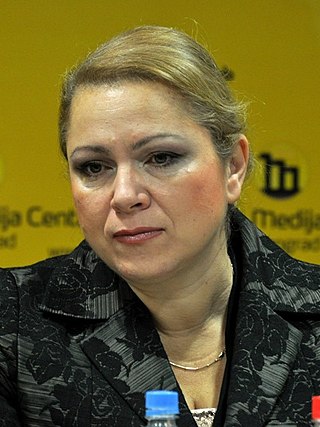
Jasna Matić is a Serbian business consultant and a politician. She served as the Minister of Telecommunications and Information Society from 2008 to 2011.
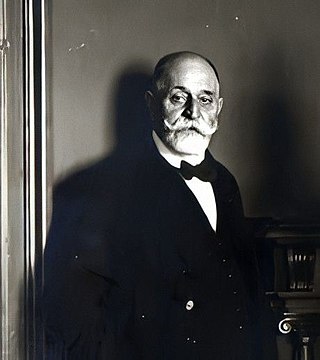
Đorđe Vajfert was a Serbian industrialist, Governor of the National Bank of Serbia and after 1920 the National Bank of Yugoslavia. In addition, he is considered the founder of the modern mining sector in Serbia and a great benefactor.
The Ministry of Finance of Yugoslavia refers to the finance ministry which was responsible for financial system of the Kingdom of Yugoslavia from 1918 to 1941 and the communist SFR Yugoslavia from 1945 to 1992. It may also refer to the finance ministry of Serbia and Montenegro from 1992 to 2003.
Dragoslav Avramović was a Serbian economist and the governor of the National Bank of Yugoslavia.
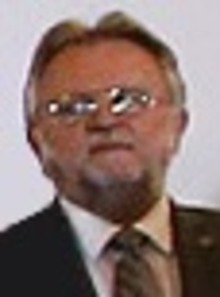
Dušan Vujović is a Serbian economist and politician. He served as the Minister of Finance in the Government of Serbia from 2014 to 2018. He also had short terms as acting Minister of Economy in 2014 and as acting Minister of Defence in 2016.

The Ministry of Finance of Serbia Building is a building of the Ministry of Finance of Serbia, located in Savski Venac, Belgrade, Serbia.

Vojislav Marinković was a Serbian and Yugoslav diplomat and politician, serving two times as Minister of Foreign Affairs and briefly as Prime Minister during the dictatorship of King Alexander I.

Belgium–Yugoslavia relations were historical foreign relations between Belgium and now split-up Yugoslavia. During the time of Yugoslav existence both countries were European multicultural societies and both implemented federalization reforms in the 1970s with the beginning of the state reform in Belgium and adoption of the 1974 Yugoslav Constitution.
Dragoslav Jovanović is a former politician in Serbia. He was a deputy prime minister in the Serbian government from 1993 to 1994, serving in the administration of Nikola Šainović. During his time in office, Jovanović was a member of the Socialist Party of Serbia.
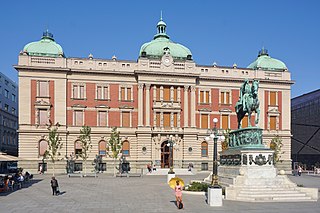
The State Mortgage Bank of Yugoslavia was a major state-owned financial institution in the Kingdom of Yugoslavia during the interwar period. It was established in 1922 to succeed an earlier institution of the Principality then Kingdom of Serbia, the Uprava Fondova established in Belgrade in 1862. In 1946, the DHB was merged into the State Investment Bank of Yugoslavia.

